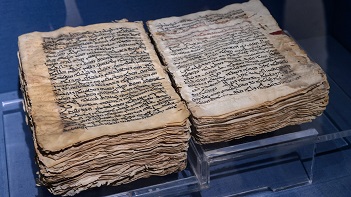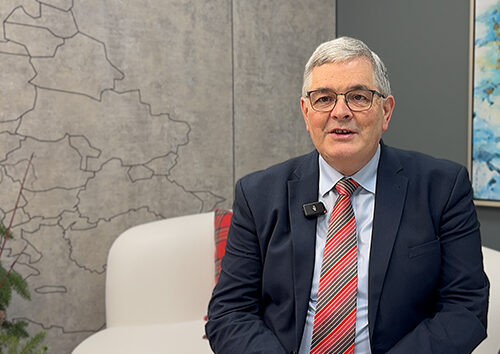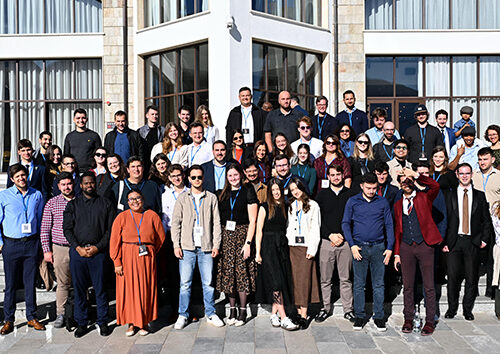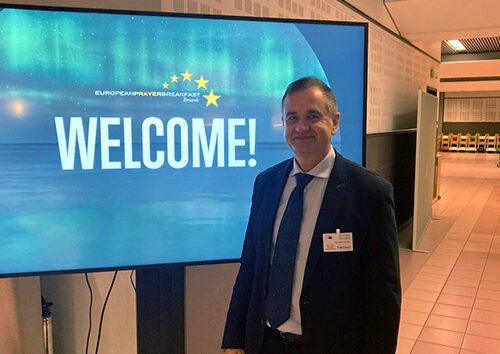20 May 2019 | Saint Catherine’s Monastery, Egypt [Tor Tjeransen/tedNEWS]
Ancient manuscripts, many of which have not been fully studied, are now being made available to academics by a careful process of digitalisation in a remote Sinai monastery.
In a dark room filled with state-of-the-art electronics and camera equipment behind the thick walls of Saint Catherine’s Monastery, a group of Greek experts are digitising thousands of ancient Christian manuscripts. It is painstaking work, but the aim is to make these important documents available to scholars around the world. They work under the direction of Father Justin, the monastery librarian.
![Saint Catherine’s Monastery, Sinai [All Photos: Tor Tjeransen/ADAMS] Saint Catherines monestary](https://ted.adventist.org/sitenews/wp-content/uploads/2019/05/images_news-2019_Saint_Catherines_monestary.jpg) St Catherine’s lies at the foot of Gebel Musa, the mountain thought by many to be where God descended to give Moses the Ten Commandments. For centuries, monks have come to live a life of contemplation in this remote location so rich with Biblical history.
St Catherine’s lies at the foot of Gebel Musa, the mountain thought by many to be where God descended to give Moses the Ten Commandments. For centuries, monks have come to live a life of contemplation in this remote location so rich with Biblical history.
This is one of the oldest monasteries in the world to have an unbroken history of operation and contains the world’s oldest continually operating library. Through the centuries the monks acquired a huge collection of rare documents in Greek, Georgian, Arabic, Coptic, Hebrew, Armenian, Aramaic, and Caucasian Albanian texts. Today the library is home to an exceptional collection of ancient Christian manuscripts. Although, only the Vatican Library has a larger collection of Greek manuscripts, the Sinai library may be unsurpassed for its early Syriac and Christian Arabic manuscripts, and for manuscripts with intact early bindings. The goal is to make these manuscripts available online.
Saint Catherine’s Monastery is an Eastern Orthodox monastery, and within its walls is the place where tradition tells us God met Moses in the burning bush. Monks were living at the site even in the fourth century. The present basilica and surrounding fortress walls date from the middle of the sixth century. The monastery is a UNESCO World Heritage Site.
 It was in this monastery the gifted Bible researcher Constantin von Tischendorf discovered the manuscript we know today as Codex Sinaiticus. That was back in 1844 when he visited the monastery in search of the oldest Bible manuscripts. Codex Sinaiticus is one of the most important source documents for the New Testament.
It was in this monastery the gifted Bible researcher Constantin von Tischendorf discovered the manuscript we know today as Codex Sinaiticus. That was back in 1844 when he visited the monastery in search of the oldest Bible manuscripts. Codex Sinaiticus is one of the most important source documents for the New Testament.
In December 2017 the monastery library was reopened after extensive renovation of the building. The main purpose of the renovation was to ensure the best possible storage conditions for these unique manuscripts. Now these manuscripts will take on a new life in digital form.
The group of Greek experts, who are responsible for digitising the ancient manuscripts, work meticulously on the task of photographing the old books page by page. Some of them are very fragile, and for fear of damaging them, the books are not fully opened. The experts place each book in a cradle where they are opened only at ninety degrees. The pages are photographed by cameras positioned on each side of the book. The images are then merged using a computer to create the finished image.
 This project follows a five-year initiative to photograph manuscripts with multiple wavelengths of light in what is known as multi-spectral imaging. This has been very useful in photographing palimpsests. This is the technical term for manuscripts where the original text was erased, and the valuable parchment was used a second time. The Sinai Palimpsest Project photographed some 75 manuscripts and recovered over 250 new texts. Among them were texts of the Gospels in ancient Syriac dating back to the second century.
This project follows a five-year initiative to photograph manuscripts with multiple wavelengths of light in what is known as multi-spectral imaging. This has been very useful in photographing palimpsests. This is the technical term for manuscripts where the original text was erased, and the valuable parchment was used a second time. The Sinai Palimpsest Project photographed some 75 manuscripts and recovered over 250 new texts. Among them were texts of the Gospels in ancient Syriac dating back to the second century.
The first phase of the current project involves photographing the manuscripts in Syriac and Arabic, some 400,000 pages. To-date, 130,000 pages have been photographed. “In order to have a workable goal, we needed to focus our interest on a segment of the collection. It is our goal to complete the project by the end of 2021,” says Father Justin.
Up until recently the scholars have focused on the Greek texts in the library. However, they have increasingly become aware of the need to take into account the Syriac and Arabic speaking worlds when they study the Byzantine period (330-1453). Thus, Father Justin is focusing on photographing the Syriac and Arabic texts.
The collection includes many Arabic manuscripts from the eighth and ninth centuries. These manuscripts show that Christians have been an intrinsic part of Egypt’s long history. Father Justin notes that, “at a time when many Arabic speaking Christians are leaving the Middle East, we want to remind them of their own rich heritage.”
 Father Justin calls the first phase “an ambitious but achievable goal for a three-year project”. He makes it clear that the goal is to digitise the entire collection. “At the end of the first phase, we will review our approach, and continue with the rest of the collection,” he says.
Father Justin calls the first phase “an ambitious but achievable goal for a three-year project”. He makes it clear that the goal is to digitise the entire collection. “At the end of the first phase, we will review our approach, and continue with the rest of the collection,” he says.
A joint team from Hope Channel Norway and the Trans-European Division saw the process of digitising these old manuscripts when they visited the monastery in early March while filming a documentary about the Codex Sinaiticus. Father Justin explained how new technology has been developed to facilitate the work of photographing the 4,500 manuscripts in the library.
Ordinarily one does not associate ancient monasteries with high technology, but the work going on at Saint Catherine’s defies superficial stereotypes of monastic life. The experts work with two different workstations. With the newer manuscripts, they are able to photograph between 600 and 800 pages a day. A different workstation is used for the oldest and most fragile documents, where the number of pages photographed in a day drops to about 150.
The work of photographing the manuscripts is a collaboration between Saint Catherine’s Monastery, the Early Manuscript Electronic Library, and the library of the University of California, Los Angeles.
A video series filmed at St Catherine’s and across historic sites in Jordan will be available later this year in both Norwegian and English. This joint collaboration will help tell valuable biblical stories to a larger audience, whether they are readers of manuscripts or avid users of the latest modern technologies.
Victor Hulbert, who hosted some of the English sections of the filming, is impressed. He said, “If monks in a secluded monastery are sharing their resources via the internet and now via social media, it reemphasises to me the need for us, as a church, to use these same resources to share our important message.
tedNEWS Staff: Victor Hulbert, editor; Deana Stojković, associate editor
119 St Peter’s Street, St Albans, Herts, AL1 3EY, England
E-mail: [email protected]
Website: www.ted.adventist.org
tedNEWS is an information bulletin issued by the communication department of the Seventh-day Adventist Church in the Trans-European Division. Readers are free to republish or share this article with appropriate credit including an active hyperlink to the original article.



